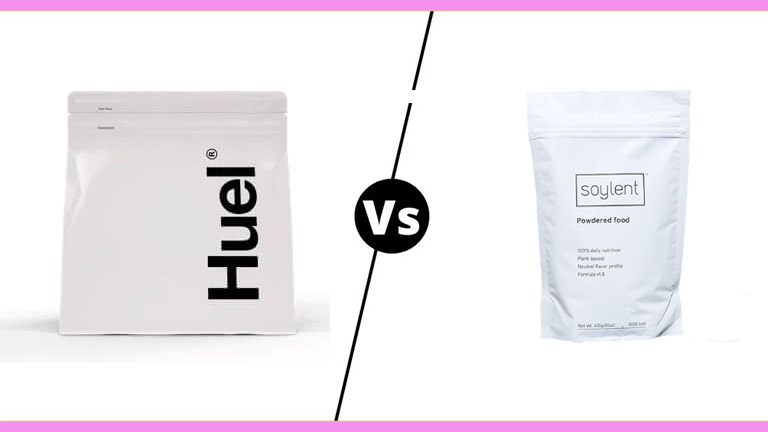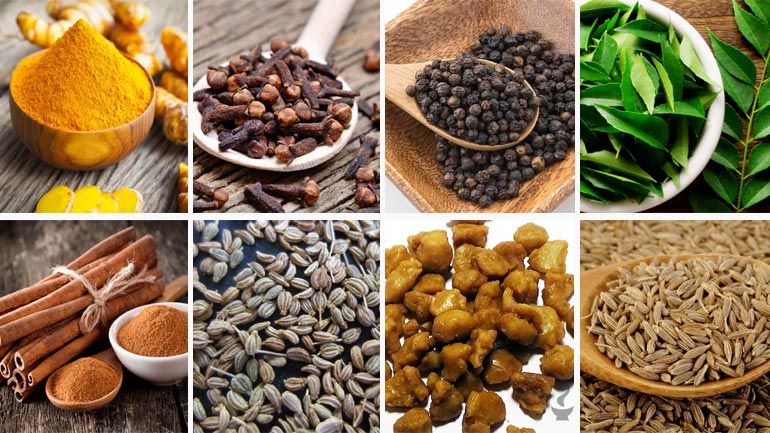
When it comes to many meal replacement options, some super users and health nuts have considered a few products which have been on the market that others don’t know about. While most of the nation recognizes names like TruVision, TruHealth, SlimFast, Boost by Nestle, and many more, people have been making a wave in secret with ingredients with meal replacement products like Soylent and Huel.
Huel and Soylent products on the market vary greatly in what their ingredients are, which makes them generally better for different users altogether (We shall see why later) While there have been many ups and downs during both product’s starting points, Huel started their product in 2014, while Soylent got its startup in 2013. In this guide, we’re going to pit these marketing meal replacement shakes into an ultimate battle of the shakes. Welcome to Huel vs. Soylent Meal Replacement Shakes!!! Let us see which is the better verdict of these two!
Huel Powder, Ready to Drink, and Flavor Boosts
Huel meal replacements are 100% vegan, and they have an intense boost of numerous macronutrients that can kickstart your day. And they’re very low on the GI (glycemic index).
We are going to look at how Huel works in many different ways, but in this article as compared to other articles we’ve had, we’re going to look at it in a 2000-calorie diet per day. Of course, you shouldn’t use any product to replace all of your meals to equal the entire 2000 calories per day, but this just gives you a basis so you can compare both Soylent and Huel later. By this example, we’re going to provide a little list. While the product comes in numerous forms, we’re just going to include the powder (keep in mind that the ready-to-drink mix varies some). Here’s what you get per 2000 calories of Huel:
Also Contains:
- Avenanthramide, Ferulic Acid, Lycopene, Lutein, and Zeaxanthin.
- Contains Vitamin K2
- Does not contain any soy.
- Fats: 61 grams
- Fiber: 44 grams
- Protein Source: Pea and Brown Rice
- Protein: 143 grams
- Sugar: 4 grams
- This is a completely vegan product.
- Very friendly for keto dieters.
- Vitamin A Source: Retinol Acetate (palm oil is not the main source of vitamin A)
So, there’s a large number of things that you can see that Huel contains. The Huel name tries to make sure you get the premier forms of vitamins rather than using cheaply made vitamins. For example, they include vitamin K2 as mentioned along with vitamin K1. There are numerous reasons for this, though is because K2 causes more biological activity in your body. And Folate is ten times better for you, as well as more costly to make. All of the phytonutrients are made out of the aventhramides and ferulic acid, which are better carbohydrate sources. It also gives you numerous amino acids along with special antioxidants which help detoxify and decrease health problems.
What about Huel’s Vitamins?
While Soylent contains all of the vitamins and nutrients at a standard 20% level, Huel actually has a varying amount of vitamins per 400 calories (100 grams) serving. Here are the vitamins that Huel has in store for you with every serving:
| Vitamin D: 20% | Calcium: 20% | Iron: 39% |
| Potassium: 20% | Vitamin A: 20% | Vitamin C: 68% |
| Vitamin E: 20% | Vitamin K: 31% | Thiamin: 25% |
| Riboflavin: 23% | Niacin: 25% | Vitamin B6: 24% |
| Folate: 33% | Vitamin B12: 33% | Biotin: 33% |
| Pantothenic Acid: 24% | Phosphorus: 52% | Iodine: 20% |
| Magnesium: 23% | Zinc: 36% | Selenium: 36% |
| Copper: 33% | Manganese: 78% | Chromium: 23% |
| Molybdenum: 93% | Chloride: 20% | Choline: 20% |
These vitamins are based on the original vanilla v1.1 flavor, but it is literally almost completely similar to all the rest. As you can see, there is so much more that goes into the product than in most other protein or nutrition meal replacements. You could literally live off of this if you had to (not saying you would want to), as compared to the original claim that Soylent gave stating that it was a replacement for all meals (after issues and customer complaints, they no longer use that slogan for good reason). It is important though to realize that Huel is a meal replacement shake, but you would not want to drink this four times a day. Maybe once or twice is acceptable to ensure that you get a good balance of all of the nutrients you would want though. And the god thing? Most of the fats you get from this are polyunsaturated fats and monounsaturated fats. There are about 2 grams of saturated fats per serving, but that’s still relatively low. Because each serving contains 42g of carbohydrates, and 9 grams of fiber, 1 gram of sugar, and another for the extra sugars from the flavoring, it’s still better for you and has fewer net carbs than Soylent (you’ll see later).
How does it Taste?
Huel by itself isn’t amazing, but numerous reviews out there state that it tastes a lot better than Soylent and has almost a vanilla oatmeal taste to it. Since it started though, Huel has released numerous “flavor” packets that give it an added boost so you can pick different flavors you want, and each of them is made with all-natural and organic ingredients to help get you out of the boredom of having the plain vanilla flavored powder.
How Do You Use Huel?
In order to use Huel, all you have to do is literally separate the serving (if you buy the big bag of it) add water, and blend it up. You can blend it with a blender, but you can also buy a blender cup, which they have their own brand of as well which includes a shaker. This is great because all you have to do it add the powder, add the water, then shake it up. If you want a little more calcium and vitamins A and D (if you don’t mind a few more calories), you can mix it with half water, and half whole milk or heavy cream.
Onto the Next Contender – Soylent
Soylent is pretty similar to Huel in the sense that it contains just about as many vitamins. It doesn’t contain all of the Fiber that Huel has in a 2000-calorie serving, but we’ll get to that later. The maker of Soylent actually stated back in 2013 that he was able to live off of Soylent for a whole month before he released it. Unfortunately, when people tried this, however, there were plenty of complaints. It’s not a bad drink though. Here’s the 2000-calorie table to compare to the Huel powder.
- Protein: 65 grams
- Fiber: 20 grams
- Fats: 65 grams
- Sugar: 50 grams (contains Splenda®)
- Carbohydrates Source: Maltodextrin (extremely high on the GI)
- Protein Source: Soy Whey Protein (primarily soy ingredients)
- Contains: Vitamin K1, but not K2
- Vitamin A is derived from palm oil
- Costs about the same as Huel.
- Allergens: Contains Soy
- Also 100% vegan. But with such a high amount of harmful carbs, it’s not keto-friendly.
So is Soylent Bad?
Soylent isn’t necessarily bad, it’s just made up of different items than Huel. However, thinking on a physicality level, Soylent is perfect for some individuals. Since there is such a high amount of carbohydrates built from starches and sugars, a drink like Soylent is a perfect pre-workout protein shake for those bodybuilders out there wanting to bulk up. It has about the same amount of calories per serving as Huel and is made of soy protein. The downside is that it doesn’t have all of the same vitamins. While both drinks aren’t 100% keto-friendly, Soylent is the worse of the two when it comes to net carbs, so it depends on what you’re looking for in a drink.
Vitamin Content
Soylent literally is comprised of every single one of the same vitamins and minerals that Huel has (except for the extra phytonutrients and vitamin K2 of course), except they only have a standard base of 20% of every vitamin and nutrient as compared to the variety that Huel has. This isn’t bad though, as Soylent is meant to replace any meal of your day (it’s definitely not meant to replace every meal of the day. On a 2000-calorie diet, that would still be only 80% of the recommended daily allowance of all of your vitamins and nutrients. So, in our book, the Huel product wins on this note.
Fear of Testosterone Loss?
There were rumors circulating that too much soy protein would cause men’s testosterone to plummet, but it would literally take approximately 3 servings a day to experience only a 19% loss of testosterone in men (not a huge decrease at all). Most men are recommended to intake less than 3 servings per day, which is perfectly fine because Soylent is not meant to actually replace every meal of your everyday life. On a positive note though, Soylent may be linked to the benefits of increased weight gain (healthy, such as during bodybuilding or heavy physical activity and lean muscle building), as well as even human growth hormone benefits if used no more than once or twice per day for men. That means that for adolescents, taking Soylent once per day can actually help you grow faster and stronger, which is always a plus. So those who are worried or cautious about this may simply want to know they can still enjoy Soylent every day, but just limit themselves to one shake per day.
Sugar Content?
While Soylent does contain high amounts of sugar, they’re derived from sucralose, which is commonly known as the popular artificial sweetener branded as Splenda®. They use this so you have high amounts of carbohydrates, but it’s not as harmful as actual sugars would be. Even still, for keto dieters, this spike in carbohydrates is much higher than Huel but is excellent for people not on a super-low carbohydrate diet.
How About That Taste Factor?
While Soylent by itself has been told to be horrible by many users, it is extremely open to blending with other things to add flavors, such as fresh fruits, and other additives that can make it taste better. The new Soylent actually can come in a variety of flavors (more are available in the ready-to-drink shakes than in the powder form) that can aid you in getting a better flavor. But that’s normally the price of any health shake is that you’re replacing food. With all of the vitamins and minerals that make up this healthy meal replacement shake, it’s no surprise that by itself it isn’t the best-tasting product on the planet.
Our Conclusion
While Huel is our primary top pick for numerous reasons, including the better-studied research that has been done, it generally makes no difference in what you want to use when it comes to the two meal replacement shakes. The main thing to think about with the comparison between Huel and Soylent is what purpose you want to use them for. You can generally get by with drinking more Huel per day (just beware of the bowel movement warning on their packaging so you’re educated well), but you will in general benefit from either one of them.
If you’re trying to bulk up, you may want to use Soylent as a meal replacement shake or a pre-workout shake, but if you want to possibly lose weight, get a higher amount of energy boost and nutrients, as well as truly replace your food intake some, feel better overall, and build leaner muscles with less reliance on carbohydrates (while there’s a slight risk of the carb count being too high on both shakes, there are certainly far less in Huel than there are in Soylent), then you’ll want to go with Huel. And what’s even better? Both of them also have ready-to-drink options available. If you want more flavors, try Huel, since you can add your own flavor boosters or buy theirs.




